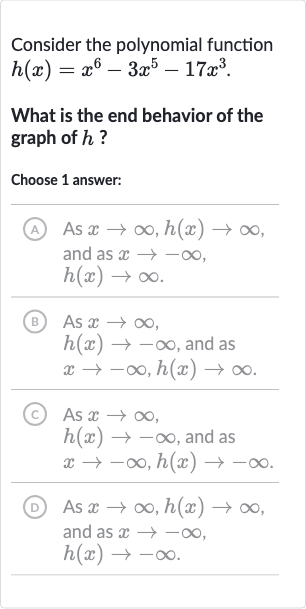Full solution
Q. Consider the polynomial functionWhat is the end behavior of the graph of ?Choose answer:(A) As , and as , .(B) As , , and as .(C) As , , and as .(D) As , and as , .
- Identify Leading Term: Identify the leading term of the polynomial function. The leading term of the polynomial function is , since it has the highest power of .
- Determine End Behavior: Determine the end behavior based on the leading term.The end behavior of a polynomial function is determined by its leading term. Since the leading term is , which is an even power, the end behavior will be the same in both directions of the x-axis. As approaches positive infinity (), will also approach positive infinity. Similarly, as approaches negative infinity (), will also approach positive infinity because an even power of a negative number is positive.
- Choose Correct Answer: Choose the correct answer based on the end behavior.Based on the end behavior determined in Step , the correct answer is:(A) As , , and as , .

